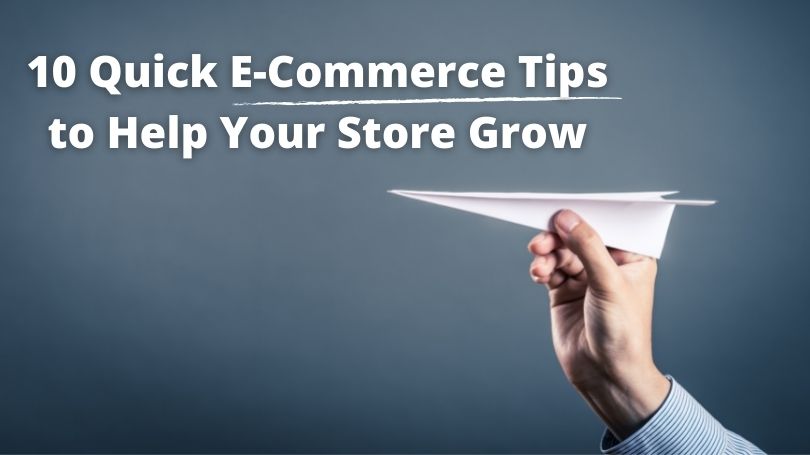Nowadays, paid ads are more expensive, and search engine optimization (SEO) has become one of the most popular and effective ways to get online traffic despite the availability of multiple channels of paid advertisements. Furthermore, SEO is organic and free. The ability to generate organic traffic to your online store via SEO is essential because it means you get to save money that would have been spent on SEM (search engine marketing), display advertising, and other paid traffic channels. This article will share some tips about a cost-effective option for growing your eCommerce business online. So let's delve into some of the very best eCommerce tips that will boost traffic for your eCommerce business.
1. Proper Website Structure
When your website has a proper structure, it translates to a higher chance of converting leads to clients or customers. Furthermore, it also enhances your ranking on search engine result pages. There are several ways to structure your website properly. The most notable ones are clean uniform resource locators (URLs) and breadcrumb navigation. The ways mentioned above can result in an immediate impact on the traffic coming to your online store. Breadcrumb navigation is a type of web navigation that reveals your position in a website's hierarchy without checking your URL. This kind of navigation also provides functions such as website mapping, click-through rates on-site, and the arrangement of your website structure. On the other hand, a clean URL is another way to structure your site. A clean URL is a URL that's easily readable by site visitors. This type of URL is more usable and accessible by the search engine and site visitors because they are meaningful and intuitive. Therefore, it's a better way to structure your site URL, unlike a messy URL. A good example of a messy URL: https://www.growth-hackers.net/index.php?page=blog The clean URL version will be: https://www.growth-hackers.net/blog
2. Use Ecommerce-Centric Keywords
This tip is less technical than website structuring, but it's just as important. An e-commerce SEO strategy cannot be successful without proper keyword research. Researching keywords that are commonly used for eCommerce will help you discover traffic triggers that you can use to grow your business. A solid keyword foundation can rocket your organic traffic off the charts and yield astonishing conversion rates if done right from the beginning. This stage in your eCommerce SEO cannot be trifled with because its execution will have an effect on subsequent phases. Google Keyword Planner is an indispensable tool in keyword research. It enables users to access a database of commonly used keywords for different things and subjects of interest. You can analyze things such as the average CPC, the competition, and the monthly search statistic of that keyword. Another crucial aspect of keyword research is knowing what to look for. You should be looking for "high intent" keywords whose average monthly search statistic is high. In layman terms, that simply means keywords with a high rate of conversion. Also, ensure that you test these keywords by using them to carry out a search on Google. Note your ranking on search engine result pages. If your competitors on those pages are industry giants, you should use a long-tail keyword (a keyword that's more specific or narrow to what you're searching for). Specific paid keyword tools such as Mangools and Ahrefs will allow you to conduct in-depth research into keyword competition and difficulty to enable them to decide which opportunities are more important.

3. Product Page Optimization
If you're selling a product that's similar or identical to your rivals, mirroring their product descriptions on your page won't make much difference to your organic traffic. Product pages and descriptions constitute a vital part of your SEO journey. Every inch of it should be properly optimized. Additionally, you can do SEO competitive analysis to understand industry trends and do better than other brands. For instance, areas such as H1, Meta Descriptions, and Meta Titles should be optimized. Your product page and description should be original, with a touch of creativity added for good measure. This can be achieved by: ● Not deviating from your branding ● Using document tools such as bullet points to clearly outline the features and benefits of your products, instead of writing them out in long paragraphs. ● Avoiding or at least minimizing the use of industry jargon in your product page or description. Instead, you can stick to simple, layman language. ● Ensuring the overall content of your product page is relatable to your buyer(s).
4. Mobile Optimization Should be Paramount
According to Adobe Analysts, more than 30% of black Friday sales last year were made from phones and tablets. This proves that the mobile experience is not prioritized for just SEO and Google search engine. Therefore, your eCommerce site should be optimized for mobile devices. A significant amount of traffic comes from there, and if your site is not optimized for mobile devices, you probably won't get the traffic to reach your target sales. So to make your site optimized for mobile devices, you need to ensure the following: ● Your website is fast and responsive when accessed by mobile devices. ● Your web pages load fast on mobile devices. ● Your site can easily be navigated on mobile devices, which enhances the user experience. ● The checkout page is optimized for mobile devices to improve the conversion of leads to customers.

5. Don't Cannibalize Content
Content cannibalization simply means duplicating content. For sites that are selling a lot of products, this makes it hard to distinguish product variations and descriptions clearly. The end result is a dismal ranking on search engine result pages. To curb the negative impact on your search engine ranking due to duplicate content, you can include a 301 redirect or a canonical tag so that the search engine can differentiate your site from others who have similar or identical content.
6. Include Sitemap.xml in Your Web Search
Usually, a lot of prominent e-commerce platforms are equipped for the automated generation of sitemap.xml. However, it's still necessary to add yours on the Google search console. A sitemap.xml is a compilation of all the significant pages of your eCommerce store, which ensures that the search engine can locate all of them.
7. Category Pages Optimization
Category Pages and product pages have the same level of importance in search engine optimization. Optimizing them also involves identical principles or practices. For instance, using creative and original content. To optimize your category pages, you should do the following: ● Optimizing the category titles sourced from your keyword research ● Category meta description optimization ● Writing an original and creative product summary that will draw the attention of site visitors and improve your click-through rates. ● Include your category H1 tag and make sure that every page has just one. Also, please adhere to best practices just like any other content. ● Add a category page description right under your H1 tag. You can break up your content by adding a shortened piece of content at the top of your description followed by more detailed content at the bottom (if you want). ● Add internal links in your category page description. ● Add images to enhance the visual appeal of your category page. In fact, there should be images of your products in every part of your category page. In addition, you can add a custom image or graphic design at the header section of your category page for further differentiation.
8. Boost The Speed of Your Website
This can instantly have an impact on the quality of traffic coming to your online store, and it can enhance visitors' experience. There are tools that you can use to measure the speed of your site and detect whatever is responsible for slowing down your site speed. A couple of recommended free tools include Pingdom and Google PageSpeed Insights. These tools provide you with insightful action items that can be immediately rectified. However, it's important to note while some issues can be easily be rectified at once, others will prove more challenging.

9. Secure Your Site With HTTPS
This may sound surprising, but there are still tons of eCommerce sites without the security that HTTPS offers. The good thing is it's not too late to secure your store. For a lot of reasons such as getting more e-commerce clients, improving your reputation and credibility, securing your store is very important. Firstly, being an eCommerce store owner, you are privy to the personal information of your customers, such as billing or delivery address. So the best thing is to make sure that every personal information collected from your customers during their visit to your store is encrypted. Another essential reason to secure your store with HTTPS is that Google has declared it a factor for SERP (search engine result page) ranking. So using it improves your chances to rank higher. Fortunately, the majority of eCommerce websites have SSL standards or make them easy to buy.
10. Post Content at Regular Intervals
In SEO, Content is supreme. It doesn't matter if the content is in textual, audio, or video format, every eCommerce site that wants to boost its SEO should post frequently. You can decide to post weekly, twice a week, and so on. Bonus Tip: Integrate "repricing" in your pricing strategy. What is it? "Repricing" or also called dynamic pricing for e-commerce is the process of offering products at various prices that adjust according to market conditions. It is an increasingly frequent solution in e-commerce. More and more online stores use dynamic pricing software to fully use their margin potential – maximize profits and improve positioning on price comparison websites. Enjoy!




